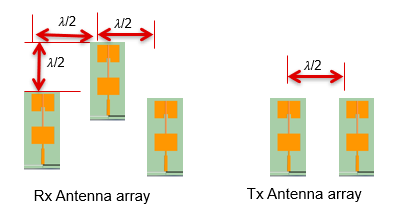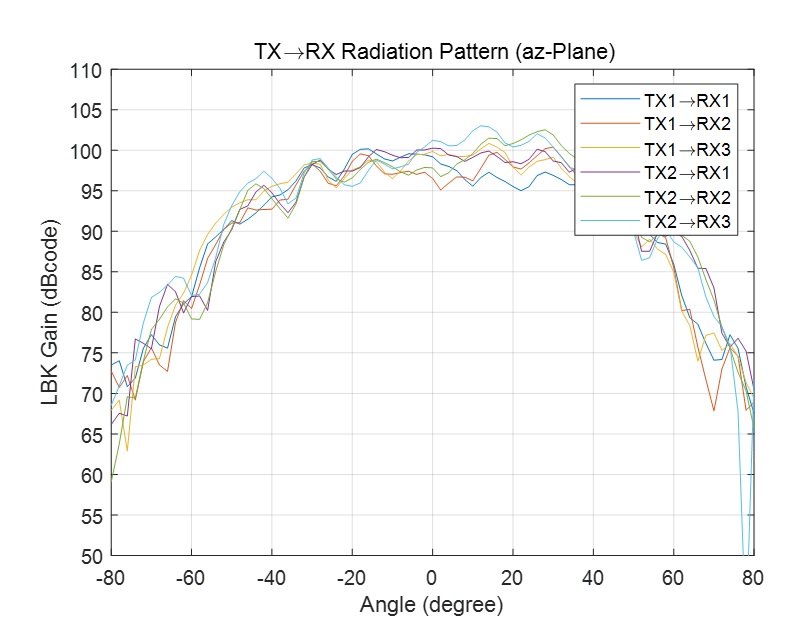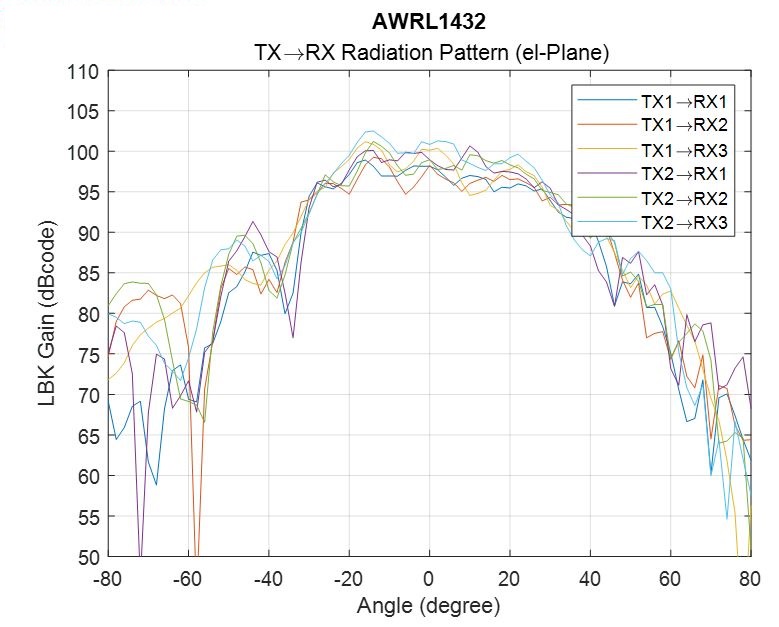SWRU613A July 2023 – August 2024 AWRL1432 , IWRL1432
- 1
- Description
- Get Started
- Features
- 5
- 1Evaluation Module Overview
-
2Hardware
- 2.1 XWRL1432BOOST Antenna
- 2.2 EVM Mux Block Diagram
- 2.3 Switch Settings
- 2.4 LEDs
- 2.5 Connectors
- 2.6 USB Connector
- 2.7 DCA1000 HD Connector
- 2.8 Booster Pack Connector for the LaunchPad Connectivity
- 2.9 CANFD Connector
- 2.10 LIN PHY Connection
- 2.11 I2C Connections
- 2.12 XDS110 Interface
- 2.13 Flashing the Board
- 2.14 DCA1000EVM Mode
- 2.15 PCB Storage and Handling Recommendations:
- 3Software
- 4Hardware Design Files
- 5Additional Information
- 6References
- 7Revision History
2.1.1.1 Transmitter and Receiver Virtual Array
The transmitter and receiver antennas positions in Figure 3-6 form a virtual array of six transmitter and receiver pairs. This allows object detections finer azimuthal angular resolution (29°) and coarse elevation angular resolution (58°). Receiver antennas are spaced at distance D (Lambda/2) apart in azimuth plane and distance D (Lambda/2) apart in elevation plane. The transmitter antennas are spaced at distance D (lambda/2) apart in azimuth plane and are not apart in elevation plane.

 Figure 2-6 Virtual Antenna Array
Figure 2-6 Virtual Antenna ArrayFigure 3-6 shows the antenna radiation pattern with regard to azimuth and Figure 3-7 shows the antenna radiation pattern with regard to elevation for TX1 and TX2. Both figures show the radiation pattern for TX1 and TX2 and RX1, RX2 and RX3 together. All of the measurements were done with a Tx and Rx combination together. Thus, for the -6dB beam width, the user must see a 12dB drop (6dB from Tx and 6dB from Rx).
 Figure 2-7 xWRL1432BOOST EVM Azimuth Antenna
Radiation Patterns
Figure 2-7 xWRL1432BOOST EVM Azimuth Antenna
Radiation PatternsMeasured azimuthal radiation pattern for all Tx to Rx pairs (corner reflector placed at approximately 5 meters with a 4- GHz bandwidth chirp starting at 76GHz).
 Figure 2-8 xWRL1432BOOST EVM Elevation Antenna
Radiation Patterns
Figure 2-8 xWRL1432BOOST EVM Elevation Antenna
Radiation PatternsMeasured elevation radiation pattern for all TX to RX pairs (corner reflector placed at approximately 5 meters with a 4GHz bandwidth chirp starting at 76GHz).